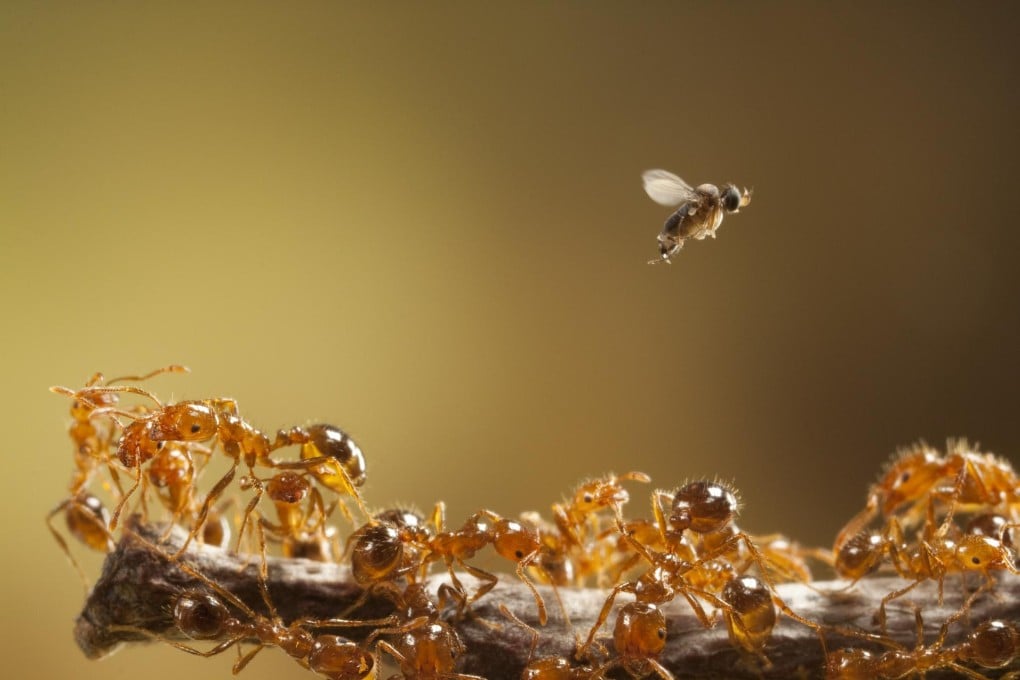Zombie ants, viruses and a parasite - how US fights insect invaders
American researchers took a fly from Brazil whose larvae eat fire ants from the inside - one of a number of natural enemies they have evaluated to stop the spread of the ants now invading Hong Kong, writes Sarah Lazarus

In the United States, scientists are fighting fire ants like the ones invading Hong Kong by deploying biological weapons. Dr Rob Plowes, research coordinator at the Fire Ant Lab at the University of Texas at Austin, says that when the first wave of fire ants swept through Texas in the 1980s, researchers began investigating their natural enemies. "Prior to that, all attempts at eradication had involved blanket spraying of pesticides. After 20 years of spraying, the ants were still expanding their range so it clearly wasn't working. The problem with these insecticides is that they don't discriminate between species - they attack all insects and many mammals and birds, and they accumulate in the environment."
A group of scientists went to Brazil to look for the tiny phorid fly, which is known to parasitise fire ants. They brought some back to Texas and released them in ant-infested areas.
The flies hover above the ants, select a target and zoom in to inject an egg in the ant's shoulder using a needle-like appendage.
"The egg swells to 100 times its original size in a couple of hours," says Plowes. "It then develops into a larva. After two days the larva squeezes itself through the ant's slender neck and goes into its head. It eats the contents of the ant's head and drinks its body fluid."
After two weeks the ant enters what has been termed a "zombified" state. The larva directs it ("no one knows how") to leave the nest, walk some distance and burrow into the ground. The larva then morphs into a pupa, decapitates the ant and spends two weeks living in its head capsule until, finally, a new fly crawls out through the ant's mouth.
"The parasitism has some impact, but more important is how the flies affect the ants' behaviour," says Plowes. Terrorised by the hovering flies, the ants stop foraging and retreat to the nest. "When they're under attack they gather about half as much food as usual, which significantly weakens the colony."
